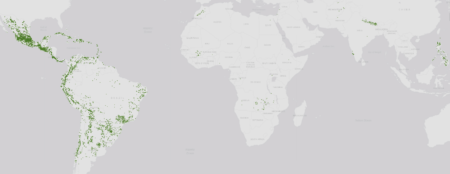More than 4,000 species of plants and fungi were discovered in 2019. These included six species of Allium in Europe and China, the same group as onions and garlic, 10 relatives of spinach in California and two wild relatives of cassava, which could help future-proof the staple crop eaten by 800 million people against the climate crisis.
That’s from The Guardian’s article on the release of Kew’s latest State of the World’s Plants and Fungi. Nice to see a shout-out for crop wild relatives, and indeed orphan crops. But it’s not all sweetness and light, of course.
Two in five of the world’s plant species are at risk of extinction as a result of the destruction of the natural world…
This year the report comes with a full volume of scientific publications in the journal Plant, People, Planet. That includes International collaboration between collections‐based institutes for halting biodiversity loss and unlocking the useful properties of plants and fungi, which has case studies on the CWR Project and Genesys.
International collaboration across biodiversity projects offers numerous benefits. Through the eight case studies presented we have identified the five key benefits to collaboration: (a) synergy; (b) greater efficiency; (c) sharing resources; (d) greater impact and leverage; and (e) transfer of knowledge and technologies. We remain mindful that successful collaborations are environments where trust and professional respect within and between partners flourish.
‘Nuff said.
